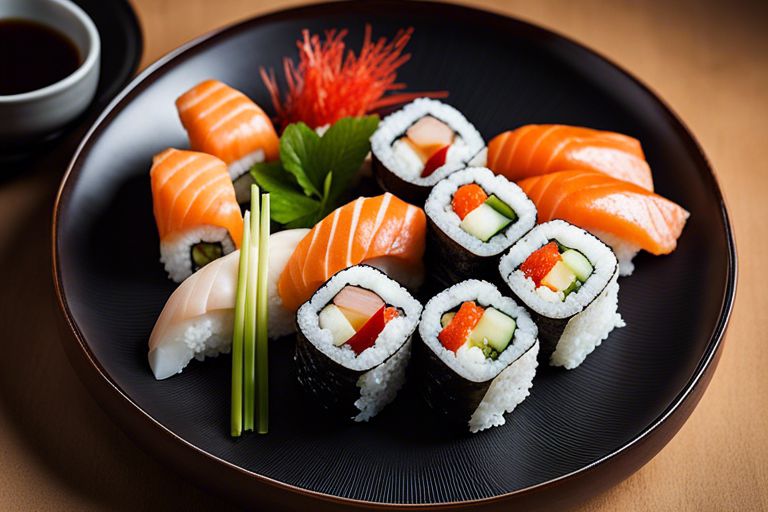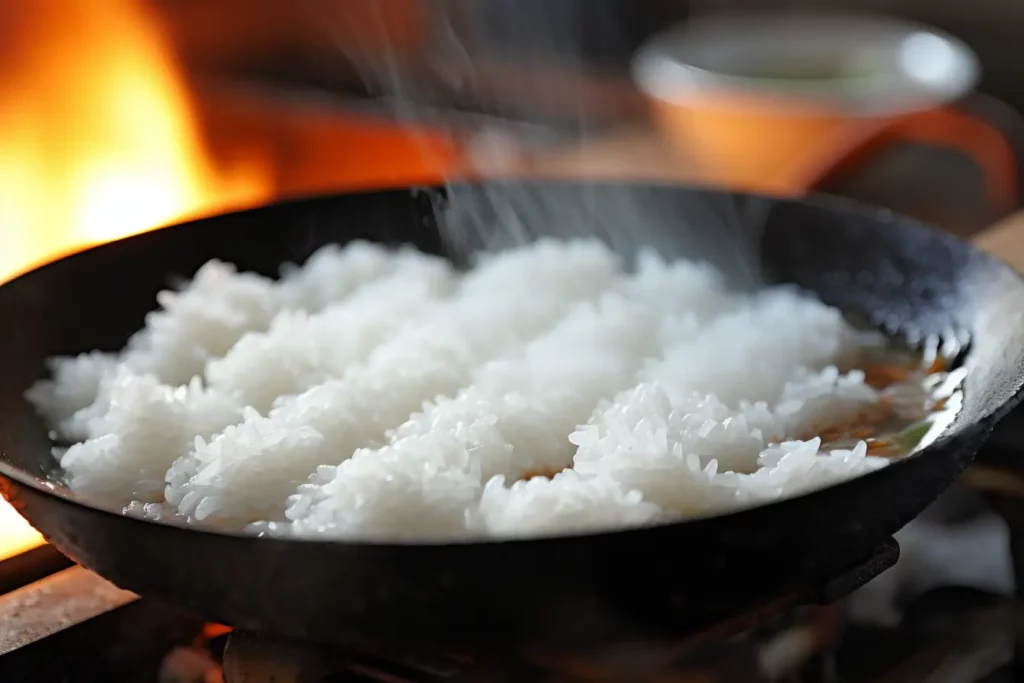Greetings, dear sushi lovers! Today we dive into the fascinating world of sesame seeds in sushi dishes. Have you ever wondered what the difference between white and black sesame seeds is and what influence they have on the taste and appearance of your beloved sushi creations? Well, let’s dive into this delicious discussion together and learn more about the hidden secrets of sesame seeds in Japanese cuisine.
Exploring Sesame Variations
Sesame seeds are more than just a simple spice – there are different varieties of sesame seeds that offer a variety of flavors and uses. In this section, we would like to explore the differences between white and black sesame seeds in more detail and shed light on their respective properties as well as possible uses.
White sesame seeds: properties and uses
White sesame seeds are light and neutral in taste, with a delicate texture. They are widely used in Asian cuisine, especially in dishes such as sushi, salads, and dressings. By roasting the white sesame seeds, they develop an even more intense aroma and become crispy, which gives them a richer flavor. They are also a popular ingredient for tahini, a paste widely used in Mediterranean cuisine.
Black Sesame Seeds: Flavor Profile and Culinary Benefits
Black sesame seeds are characterized by a richer and nuttier flavor than their white counterparts. They are often used in East Asian cuisine to add a spicy touch and an attractive color to dishes. In addition to their unique taste, black sesame seeds are also rich in antioxidants and essential nutrients that contribute to a healthy diet.
Black sesame seeds are also known to aid digestion and support skin and hair health. Their versatile culinary benefits make them a valuable ingredient in the kitchen, allowing you to enrich your food in a delicious and healthy way.
Health Aspects of Sesame Seeds
Sesame seeds are not only delicious, but also extremely healthy. They are rich in nutrients and offer many health benefits. Especially the white and black sesame seeds have their own specific benefits.
Nutrition Comparison
Comparing the nutrients between white and black sesame seeds shows that both types are rich in fiber, protein, vitamins, and minerals. However, white sesame seeds contain more calcium, while black sesame seeds have a higher content of iron.
| White sesame seeds | Black sesame seeds |
| High calcium content | Rich in iron |
| Rich in fiber | High protein content |
Effects on nutrition and well-being
Sesame seeds can make a valuable contribution to a balanced diet. Its high nutrient content and health benefits make it a valuable ingredient in any cuisine. Regular consumption of sesame seeds can increase well-being and promote overall health.
Taking sesame seeds can help regulate cholesterol levels and reduce inflammation in the body. Additionally, they can help reduce the risk of heart disease, diabetes, and other chronic diseases.
White sesame: A taste highlight in every kitchen!
Culinary Techniques
Roasting sesame seeds for optimal flavor
When preparing sushi, it is important to roast the sesame seeds before use in order to develop their full aroma. To do this, the white or black seeds can be roasted in a dry pan without oil. You should stir them regularly until they are golden brown and fragrant. Roasting enhances the nutty flavor and gives the sesame seeds a crunchy texture that is ideal for sushi.
When it comes to roasting sesame seeds, it’s important not to overdo it, as they can burn quickly. It is advisable to remove them from the pan immediately as soon as they have reached the desired color and fragrance. After that, they should cool down before being used in the sushi dishes to ensure their optimal texture and flavor.
Creative use of white and black sesame seeds in sushi
Sesame seeds are not only an excellent decoration for sushi dishes, but they also give them an interesting flavor. White sesame seeds are often used to decorate maki rolls, as they provide a contrast to the dark seaweed leaves. Black sesame seeds, on the other hand, add an intense flavor to sushi dishes and are often used for inari sushi or nigiri sushi. They can also be used to create a crispy coating for sushi rolls.
The creative use of white and black sesame seeds in sushi offers a variety of culinary possibilities and makes it possible to enrich traditional sushi dishes with modern and unexpected flavor combinations. By combining different types of sesame seeds, one can create an impressive visual presentation and an unforgettable taste experience.
Other interesting ways to use white and black sesame seeds in sushi include incorporating them into rice balls or using them as a topping for sashimi. In this way, you can reinterpret the traditional sushi dishes in an innovative and fun way, adding a touch of exoticism.
Cultural Perspectives
The use of sesame seeds in different culinary traditions offers interesting insights into different cultural perspectives. Sesame seeds are used in many dishes around the world, and the way they are used in different cultures can reveal a lot about the values and preferences of these communities.
Sesame seeds in the Japanese culinary tradition
Sesame seeds play an important role in Japanese cuisine. They are used in sushi, to make dressings, and as a garnish for various dishes. White and black sesame seeds are often used in combination in Japanese cuisine to create a visual contrast and emphasize the aesthetic presentation of the food.
The Aesthetic Significance of the Color Contrast of Sesame Seeds
In Japanese cuisine, the contrast between white and black sesame seeds is valued not only for its visual appeal, but also for its symbolic meaning. The contrast of black and white is often associated with harmony and balance, which is of great importance to Japanese aesthetics. This aesthetic approach is reflected not only in the presentation of food, but also in other areas of Japanese culture.
FAQ
Question: What is the difference between white and black sesame seeds in sushi dishes?
Answer: White sesame seeds have a milder flavor and are more suitable for decoration in sushi dishes. Black sesame seeds have a more intense, nutty flavor and can add a bolder touch to the dish.
Question: Can you swap white and black sesame seeds in sushi dishes?
Answer: Yes, you can swap out the two types of sesame seeds in sushi dishes, depending on your personal taste and desired look of the dish.
Question: How are white and black sesame seeds used in sushi dishes?
Answer: Both types of sesame seeds can be used for decorating sushi dishes, either by sprinkling them on the surface or making them into a crust.
Question: Are white and black sesame seeds healthy?
Answer: Yes, both types of sesame seeds are rich in nutrients such as iron, magnesium, and healthy fats. They are a healthy addition to sushi dishes.
Question: Where to buy white and black sesame seeds?
Answer: White and black sesame seeds are available in many grocery stores, Asian supermarkets, or online.


